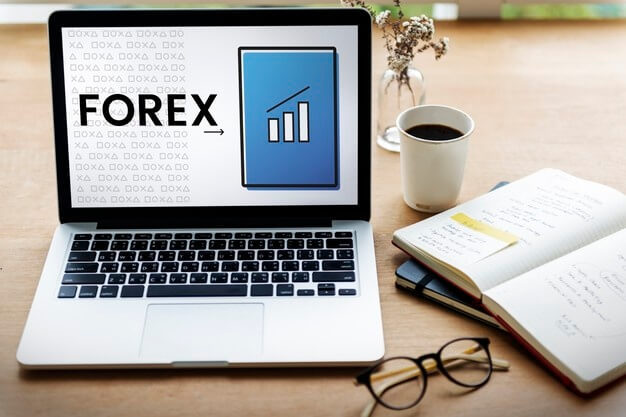08 Sep Stocks vs Bonds Difference and Comparison
Contents:


She helps them feel empowered to move forward towards a brighter future. It might help to think of value stocks as the opposite of growth stocks. A value stock might be trading at a low cost but still paying out higher dividends.
Strategic Blueprint LLC Adds First Trust Tactical High Yield ETF … – Best Stocks
Strategic Blueprint LLC Adds First Trust Tactical High Yield ETF ….
Posted: Tue, 11 Apr 2023 08:12:37 GMT [source]
If that company performs poorly, the value of your shares could fall below what you bought them for. We believe everyone should be able to make financial decisions with confidence. But there are some things investors can do to try to manage the risk.
Find What You’re Looking for at Northwestern Mutual
Every investor has her own opinion of the value of the company. Share price reflects a sort of consensus opinion of the market. In Canada, the main stock exchange is the Toronto Stock Exchange , and in Europe, there is the Euronext and the London Stock Exchange. The founder can go to various investors and pitch the success of his business to the investors in order to raise money for the second lemonade stand. Investing involves risks, including the loss of principal invested.
Before making any kind of Bonds and stocks difference, it’s important to do the research and know about the potential benefits and risks. Stocks are a kind of investment that gives people shares of ownership in a company. The minimum purchase amount to buy one Treasury bond is $1,000. Some corporate bonds may require a minimum purchase of $250,000 or more. Small buyers won’t be given as favorable pricing offers from dealers as large institutional purchasers. It’s this dynamic, among others, that helped support equities during 2020, despite the economic and health crisis.
- Growth of $10,000 invested in Vanguard’s index funds for the total stock market and the total bond market , over 10 years.
- For example, voting rights are especially important, as a company’s board of directors greatly affects how well a company will perform in the future.
- Bonds aren’t completely risk-free; there is the possibility of the issuer defaulting on its bonds or inflation reducing the value of the bond.
- If interest rates go up, then the value of the bond also goes down because other investors are then willing to pay less for it.
If you’re looking for the chance to earn a higher return, you’ll probably want to consider stocks. No need to issue cheques by investors while subscribing to an IPO. Just write the bank account number and sign in the application form to authorise your bank to make payment in case of allotment. No worries for refund as the money remains in the investor’s account.
Voting Rights
So a stock with an alpha of 3 beat its benchmark by 3 percent while a -3 indicates that it lagged its benchmark by that much. A $1M starting account with no contributions or withdrawals has a return of +20% or -20% each year for 20 years. The average return is 0% but the compound average growth rate is -2%. Accordingly, the account isn’t worth $0 at the end of 20 years, it’s actually worth $665,000. This is known as volatility drag, and it explains how wild swings in the stock market can erode your assets.
70% of Americans are feeling financially stressed, new CNBC survey finds – CNBC
70% of Americans are feeling financially stressed, new CNBC survey finds.
Posted: Tue, 11 Apr 2023 10:00:01 GMT [source]
Or an https://forex-world.net/ bond, such as a municipal bond or a Treasury bond. Now the good part about that is I select exactly what I want. The bad part is, I’m responsible for doing the ongoing management, research, and due diligence of that portfolio.
How to choose the right asset type for your portfolio
Securities and Exchange Commission , the stock market has provided annual returns of about 10% over the long term. By contrast, the typical returns for bonds are significantly lower. There are certain types of stocks that offer the fixed-income benefits of bonds, and there are bonds that resemble the higher-risk, higher-return nature of stocks. Corporations often issue equity to raise cash to expand operations, and in return, investors are given the opportunity to benefit from the future growth and success of the company. Stocks and bonds are often paired together when talking about investments, but their risks, returns and behaviors have stark differences.
A correlation of -.20 means the U.S. stock and bond benchmarks are slightly negatively correlated. The 2-year Treasury has a -.39 correlation with the S&P 500, which makes sense as treasuries are among the safest assets. When the stock market experiences volatility, investors flock to safety. Corporate bonds, on the other hand, have a .39 correlation with the S&P 500, meaning these asset classes tend to move together, just not in the same magnitude. The other key difference between the stock and bond market is the risk involved in investing in each. The bond market is where investors go to trade debt securities, prominently bonds, which may be issued by corporations or governments.
Experience the PURE Difference
Treasury bonds are widely utilized and represent the nation’s monetary soundness. Whereas if returns given are lower, the country is well on its way to paying off its debt and therefore does not require everyone here to borrow from it, and conversely. Shareholders may well be obligated to pay DDT if distributions are obtained, thereby reducing returns earned, whereas bonds are not subject to such tax penalties. So rather than bonds, which are traded over the counter, the share market does indeed have a second-hand market in existence, ensuring controlled trading . Stocks are issued by a variety of firms, while bonds are formed by corporations, governments, investment firms, and so on. Any citizen may provide a loan to an organisation, firm, entity, or other entity for a certain length of time at a preset rate of return.
For stocks, determining risk can be a bit more complicated, and many experts do it differently from one another. One popular measure of risk is a stock’s beta, which indicates how much its share price moves up and down in a given period of time compared with the market’s movements. The market has a beta of 1, so if a stock has a beta higher than 1, that means that its price has been more volatile than the market and is likely to be a riskier bet. Another measure of risk is a stock’s alpha, which represents how much better or worse it performed compared with its benchmark.
The principles of diversification support investing in both stocks and bonds. Correlations are important to keep in mind as you build a diversified portfolio. Debt InstrumentsDebt instruments provide finance for the company’s growth, investments, and future planning and agree to repay the same within the stipulated time. Long-term instruments include debentures, bonds, GDRs from foreign investors. Short-term instruments include working capital loans, short-term loans. A stock is a financial instrument issued by a company depicting the right of ownership in return for funds provided as equity.

You can also buy a municipal bond, which is issued by a local government, or a corporate bond, which is issued by a company. When you buy stock, what you’re buying is a tiny piece of a company. If, for instance, you buy stock from Tesla, you own a small piece of Elon Musk’s electric car company. When a company that was originally privately owned goes to the market and sells the stock, that is called an initial public offering . When big or popular companies offer an IPO, it is generally a big news story. Companies in the financial and utilities sectors mostly issue preferred stocks.
Because of the different risk and return profiles, there are benefits of holding stocks and bonds, it’s not usually an either or. They both have a place, though in different weightings, which change over time. Since bonds traditionally offer stability and income, but not much growth, equities are key to help investors keep pace with inflation over the long-term. Mutual funds, which may own stocks, bonds, cash or a combination of securities, are a great way for investors to build diversified portfolios at a low cost. Some investors may enjoy building a portfolio one stock at a time, but for most people owning a mutual fund or a top exchange-traded fund is an approach that usually makes the most sense. Sometimes companies fail and have to close down or reorganize.
Capital gains vs. fixed income
Bonds, on the other hand, are more susceptible to risks such as inflation and interest rates. If interest rates are high and you need to sell your bond before it matures, you may end up getting less than the purchase price. If you buy a bond from a company that isn’t financially sound, you’re opening yourself up to credit risk. In a case like this, the bond issuer isn’t able to make the interest payments, leaving itself open to default. For investors without access directly to bond markets, you can still get access to bonds through bond-focused mutual funds and ETFs.
A correlation of 0 means the assets have no relationship and move independently from one another. Put another way, if you lost -20% one day, you’d need a +25% gain the next day to break even. This is why it typically takes three years for the market to recover after a bear market.
Yr Bond
This gives the dual benefit of a high dividend yield and risk diversification. Generally, preferred stocks are rated two notches below bonds; this lower rating, which means higher risk, reflects their lower claim on the assets of the company. In a hypothetical example, maybe the long-term average of bonds is somewhere in the 3 to 5 percent range, depending on what kind of bonds I’m buying. The long-term average for stocks is maybe somewhere in the 6 to 10 percent range, depending on my time frame and the type of stocks. I’ll have much less volatility than buying only stocks, and higher returns than buying just bonds. It’s important to use the best tool for the job at hand via asset allocation.
In addition, he served as an online media manager for the University of Nevada, Reno. INVESTMENT BANKING RESOURCESLearn the foundation of Investment banking, financial modeling, valuations and more. They are sure to get their money back if the company is liquidated. Equity holders are the last ones to get paid if company is liquidated. There is a chance of losing money, which implies risk is more.
When deciding between stocks and bonds, it’s essential to consider your investment goals, risk tolerance, and time horizon. New traders with little experience may want to start with bonds as they offer lower risk and a fixed rate of return. More experienced traders may choose to invest in stocks to maximize their potential for returns but must be willing to take on a higher level of risk. Stocks and bonds are both investment options that represent ownership or debt in a company. Stocks represent a share of ownership in a company, while bonds represent a loan that an investor makes to a company or government.
This is why mutual funds and exchange-traded funds came into being. An investment is a future consumption in exchange for current consumption – with a required rate of return. Stocks are generally riskier and more aggressive than bonds, but with higher required rates of return. Stocks can also be great ways to generate income, typically via dividends, or cash paid by a company directly to shareholders. Not all stocks pay dividends, but more mature, stable companies that generate more cash than they need to fund improvements and growth will usually return what’s left in dividends. Same as with bonds, companies issue stocks to raise money from investors.
Traditional investing or trading in the current market – Business Upturn
Traditional investing or trading in the current market.
Posted: Thu, 13 Apr 2023 13:29:23 GMT [source]
The information should not be construed as tax or legal advice. A properly suggested portfolio recommendation is dependent upon current and accurate financial and risk profiles. Indeed, between 1926 and 2017, a portfolio built of 100 percent stocks offered a healthy average annual return of 10.3 percent, according to data from financial firm Vanguard. The portfolio suffered its worst year during that time period in 1931 with a heavy loss of 43.1 percent.
This portfolio allocation has had 40% less volatility than a 100% stock portfolio, but with 80% of the returns. Most stocks are traded on a stock exchange, while most bonds trade over-the-counter. However, the prices of riskier junk bonds can swing wildly based on the perceived risk of the borrower defaulting on its debts.
- According to data compiled by Vanguard, a 60/40 portfolio — 60% stocks and 40% bonds — generated an average of 8.8% compounded annual returns between 1926 and 2019.
- If you plan to hold your bonds until maturity, this won’t impact the principal you receive when your bond matures.
- On the other hand, bonds have fixed returns that have to be paid irrespective of the borrower’s performance since it is a debt amount.
- All indexes are unmanaged and an individual cannot invest directly in an index.
- When an investor purchases a bond, they’re actually loaning money to an entity like a company.
- With a stock, there is a great deal of uncertainty around the future return of stocks.
Quarterly reporting is off to a hot start with three of the biggest banks easily exceeding expectations, though stocks are mixed following a soft March retail sales report. Chizoba Morah is a business owner, accountant, and recruiter, with 10+ years of experience in bookkeeping and tax preparation. Forbes Advisor adheres to strict editorial integrity standards. To the best of our knowledge, all content is accurate as of the date posted, though offers contained herein may no longer be available. The opinions expressed are the author’s alone and have not been provided, approved, or otherwise endorsed by our partners.
Secondary MarketA secondary market is a platform where investors can easily buy or sell securities once issued by the original issuer, be it a bank, corporation, or government entity. Also referred to as an aftermarket, it allows investors to trade securities freely without interference from those who issue them. These fundamental differences highlight the stocks vs bonds returns, risk, and usefulness. Let us assume an example where an investor invests in both stock and bonds. This helps him to diversify his investment so that the portfolio remain balanced.





No Comments